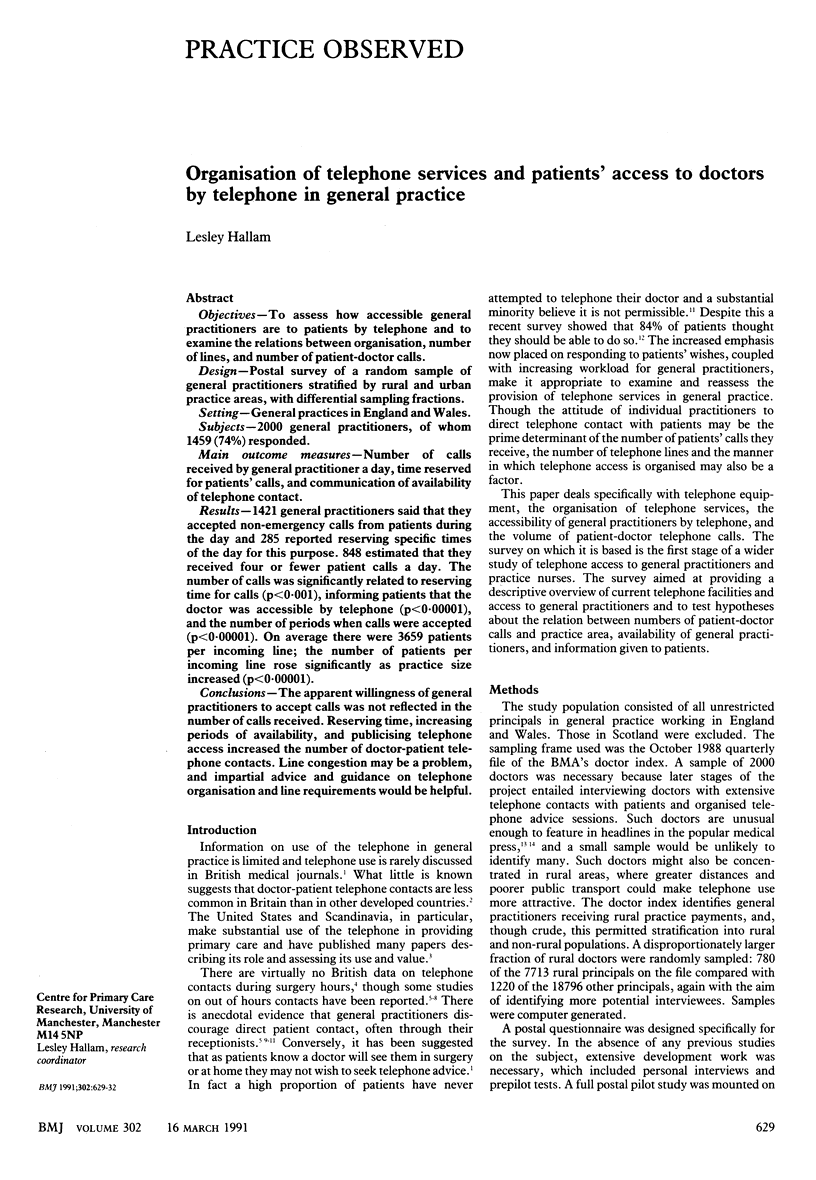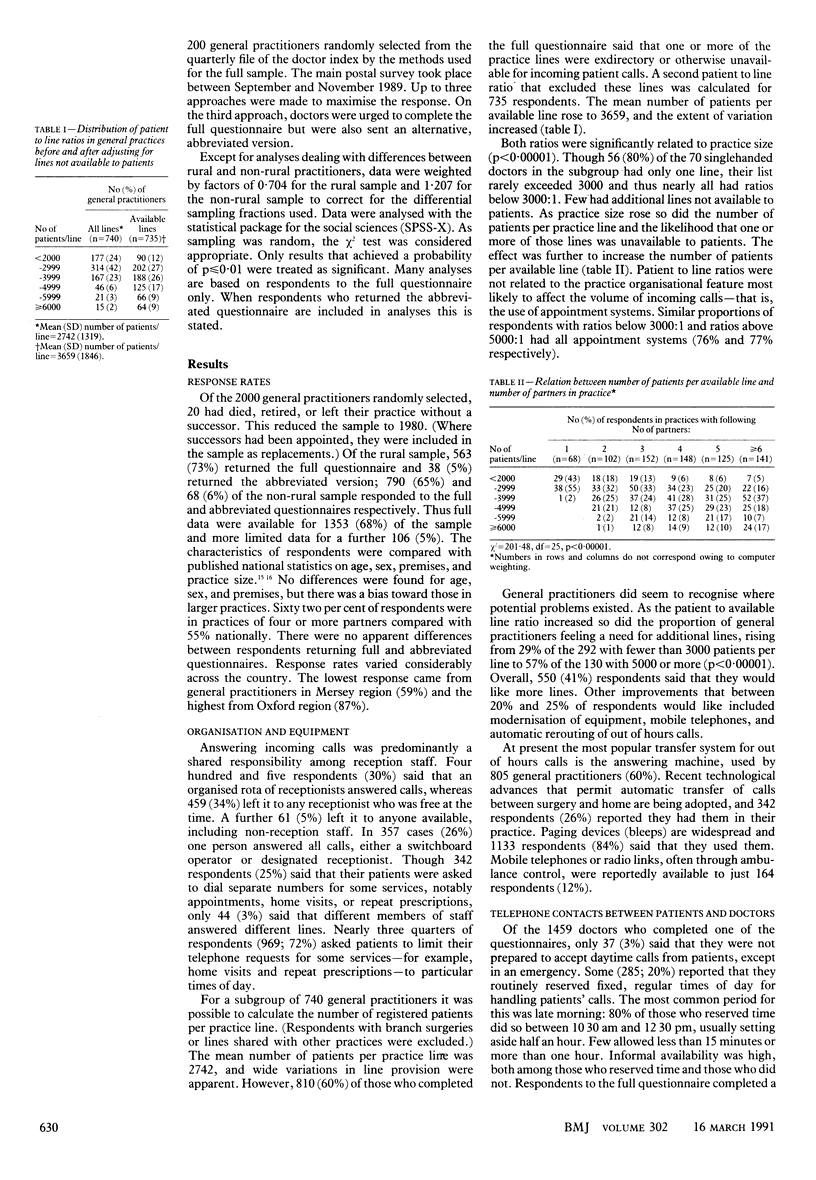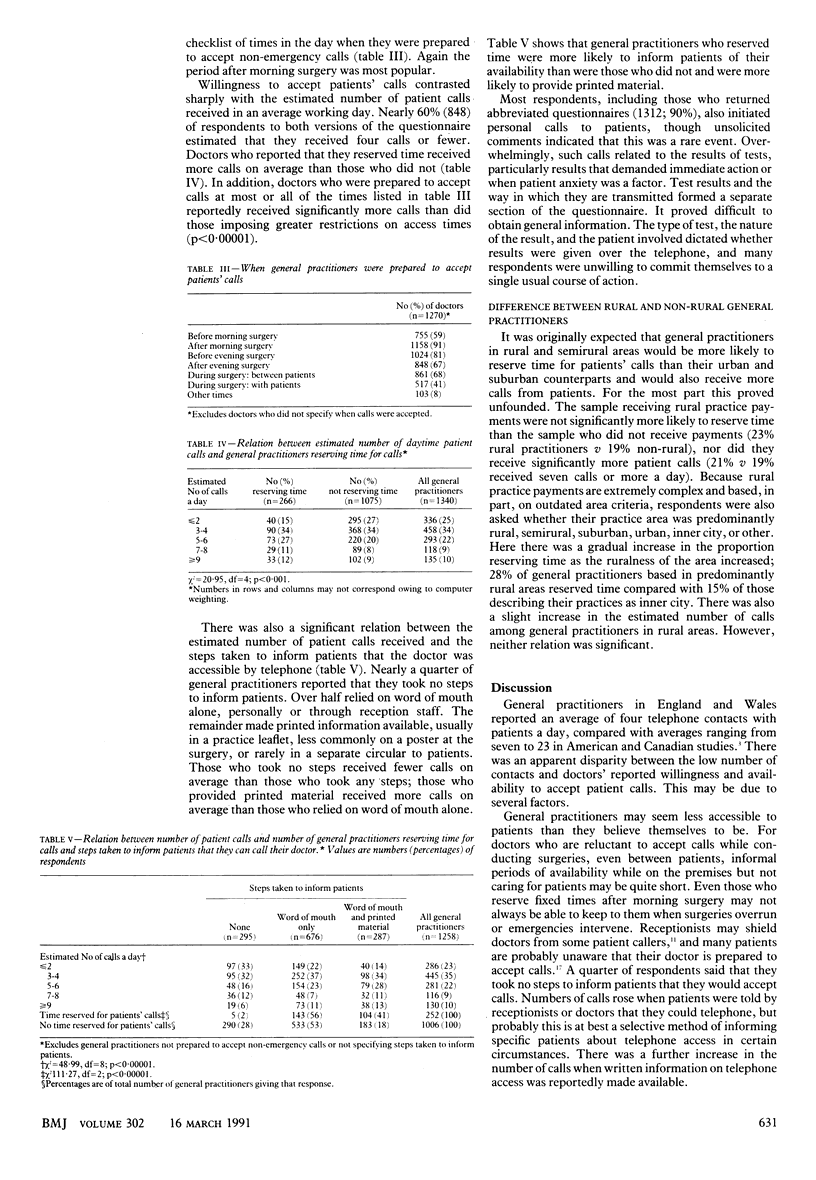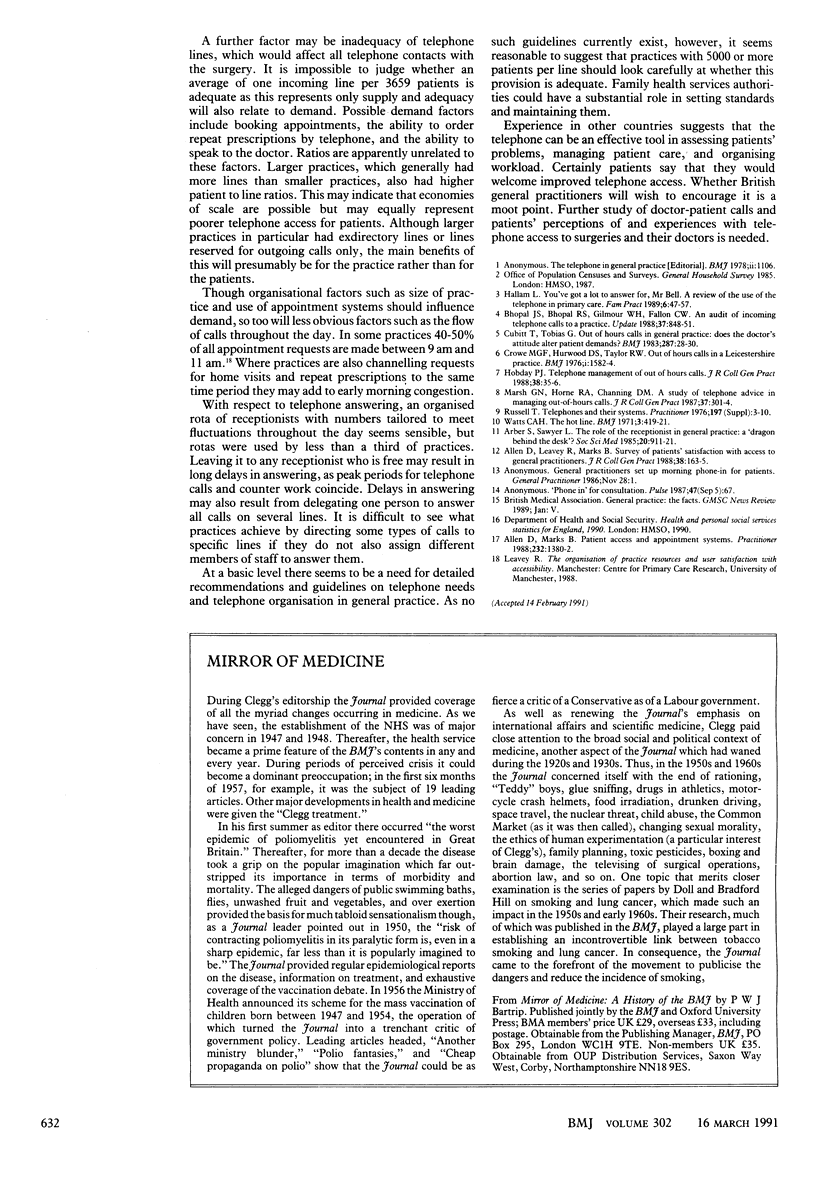Abstract
OBJECTIVES--To assess how accessible general practitioners are to patients by telephone and to examine the relations between organisation, number of lines, and number of patient-doctor calls. DESIGN--Postal survey of a random sample of general practitioners stratified by rural and urban practice areas, with differential sampling fractions. SETTING--General practices in England and Wales. SUBJECTS--2000 general practitioners, of whom 1459 (74%) responded. MAIN OUTCOME MEASURES--Number of calls received by general practitioner a day, time reserved for patients' calls, and communication of availability of telephone contact. RESULTS--1421 general practitioners said that they accepted non-emergency calls from patients during the day and 285 reported reserving specific times of the day for this purpose. 848 estimated that they received four or fewer patient calls a day. The number of calls was significantly related to reserving time for calls (p less than 0.001), informing patients that the doctor was accessible by telephone (p less than 0.00001), and the number of periods when calls were accepted (p less than 0.00001). On average there were 3659 patients per incoming line; the number of patients per incoming line rose significantly as practice size increased (p less than 0.00001). CONCLUSIONS--The apparent willingness of general practitioners to accept calls was not reflected in the number of calls received. Reserving time, increasing periods of availability, and publicising telephone access increased the number of doctor-patient telephone contacts. Line congestion may be a problem, and impartial advice and guidance on telephone organisation and line requirements would be helpful.
Full text
PDF



Selected References
These references are in PubMed. This may not be the complete list of references from this article.
- Allen D., Leavey R., Marks B. Survey of patients' satisfaction with access to general practitioners. J R Coll Gen Pract. 1988 Apr;38(309):163–165. [PMC free article] [PubMed] [Google Scholar]
- Allen D., Marks B. Patient access and appointment systems. Practitioner. 1988 Dec;232(1460):1380–1382. [PubMed] [Google Scholar]
- Arber S., Sawyer L. The role of the receptionist in general practice: a 'dragon behind the desk'? Soc Sci Med. 1985;20(9):911–921. doi: 10.1016/0277-9536(85)90347-8. [DOI] [PubMed] [Google Scholar]
- Crowe M. G., Hurwood D. S., Taylor R. W. Out-of-hours calls in a Leicestershire practice. Br Med J. 1976 Jun 26;1(6025):1582–1584. doi: 10.1136/bmj.1.6025.1582. [DOI] [PMC free article] [PubMed] [Google Scholar]
- Cubitt T., Tobias G. Out of hours calls in general practice: does the doctor's attitude alter patient demands? Br Med J (Clin Res Ed) 1983 Jul 2;287(6384):28–30. doi: 10.1136/bmj.287.6384.28. [DOI] [PMC free article] [PubMed] [Google Scholar]
- Hallam L. You've got a lot to answer for, Mr Bell. A review of the use of the telephone in primary care. Fam Pract. 1989 Mar;6(1):47–57. doi: 10.1093/fampra/6.1.47. [DOI] [PubMed] [Google Scholar]
- Marsh G. N., Horne R. A., Channing D. M. A study of telephone advice in managing out-of-hours calls. J R Coll Gen Pract. 1987 Jul;37(300):301–304. [PMC free article] [PubMed] [Google Scholar]
- Telephone management of out-of-hours calls. J R Coll Gen Pract. 1988 Jan;38(306):35–36. [PMC free article] [PubMed] [Google Scholar]


